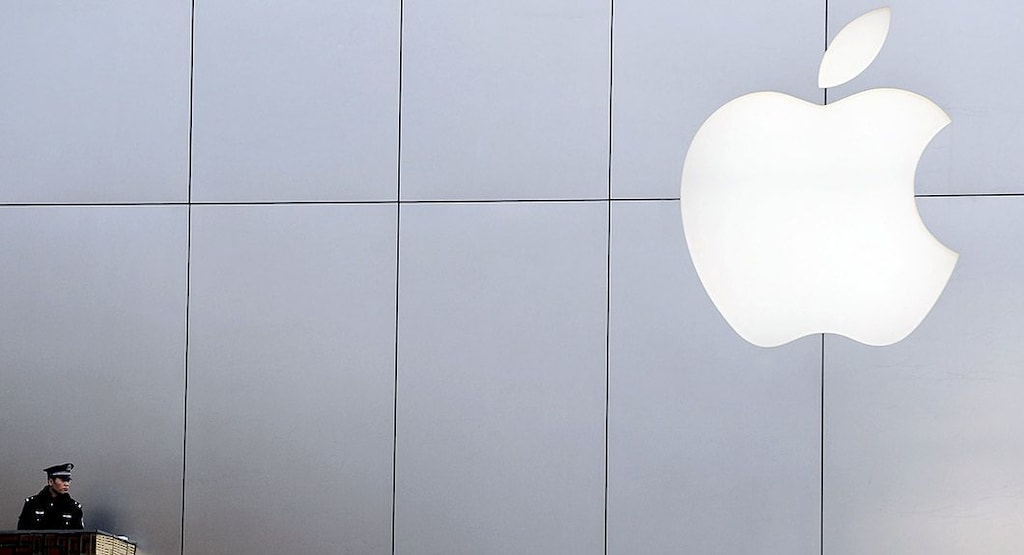Apple is airing a new TV ad that illustrates its design philosophy and explains the importance of the words that appear on the back of every Apple product: "Designed in California."
“We spend a lot of time on a few great things until every idea we touch enhances each life it touches," the voice-over says. "We sign our work. You may rarely look at it, but you'll always feel it. This is our signature. And it means everything."
Since the first fruity iMac in the late 1990s, Apple has used design as a way to attract consumers and differentiate itself from the rest of the pack. But as Steve Jobs used to say—and as Apple’s design guru Jonathan Ive says now—design is not just how something looks, but how it works. And how things work is something that every business is involved in.
It’s crucial that every business carefully designs its products and services. These 11 tips are taken directly from Apple's design process. Start applying them in your business to find better design in everything you do.
1. Brainstorm
Okay, this is probably the biggest design cliche ever, but brainstorming really is at the heart of Apple's design process. Apple’s designers take brainstorming very seriously. Every new product starts with a brainstorm and is shepherded through the design process with two or three "brainstormers" a week. These aren't meetings—they have very strict and specific rules meant to encourage creative thinking, not hamper it.
2. Start With Feelings
It sounds absurdly New Age-y, but Apple's design team begins every project with a discussion of feelings. As the new TV ad says: "This is what matters. The experience of the product. How it makes someone feel."
RELATED: Killer Tech Tools That Make My Business Better Than Yours
It's hard to imagine how terms like "excited" or "enriched" translate into features or design choices, but they become important benchmarks as the project progresses. At the end of the design process, does your product excite or enrich your customers? If not, keep going.
3. Focus
Steve Jobs once famously said that he was as proud of the products Apple didn't bring to market as those it did. Focus means saying "no" to far more ideas than saying "yes." Apple’s design department is a secret R&D lab where it figures out which products to say yes to, and which ones it has to say no to. Laser-like focus helps keep designers on track in their choices.
4. Find Success in Failure
British inventor James Dyson said that success in design only comes through failure. Dyson designed thousands of failed vacuum cleaners, but it was only through discovering what didn’t work could he find out what did. Jonathan Ive says the same thing: He’s excited by failure because it shows him something new.
5. Start Over
Apple has scrapped and restarted all its major projects from the iMac to the iPhone. The design process led the designers down a path that didn’t work, but it also showed them a new path. It’s not easy, but every business needs the courage to scrap projects that aren’t working, analyze why and apply those lessons for future business growth.
6. Prototype Everything
Most companies build dozens of prototypes. Apple’s design group builds hundreds. The iPhone’s EarPods required 124 prototypes tested on more than 600 people to get right. But it’s not just products—Apple prototypes software in the same way, and even prototyped its retail store, which was mocked up in a secret warehouse. The only way to see if a concepts works is to build a model of it.
7. Emphasize Manufacturing
Apple’s designers spend far more time in the factory than the design studio. Design at Apple is all about how the products are built.
8. Challenge Everything
A lot of Apple’s design breakthroughs come through new manufacturing methods. The “Unibody” process, for example, in which product cases are machined from solid lumps of metal, allows iPhones and iPads to be crazy thin while remaining strong and rigid. The unibody process came from Apple designers who challenged notions of how laptops and gadgets are made. In business, breakthroughs come from challenging conventional wisdom.
9. Sweat Every Detail
The iPhone’s volume buttons are based on the buttons found on the finest handcrafted Swiss watches that cost hundreds of thousands of dollars. The buttons can tolerate aerospace pressures, and will outlive other components like the screen or battery, which have limited shelf life. Does the customer know this? No, but they appreciate how beautifully and reliably they work.
RELATED: Ten Ways Apple's New iOS 7 Can Boost Business
Jonathan Ive has sometimes wondered out loud why he and his team spend so much time perfecting every tiny detail. But the details add up to the whole experience, and sweating the details makes customers fall in love with your products.
10. Keep Iterating
Apple is sometimes criticized for sticking with a particular design. Critics said the iPhone 5 was "boring" and "predictable" because it looked and worked a lot like the iPhone 4. But once Apple settles on a winning design, it sticks with it. The flatscreen iMac goes back to 2004, and the iPhone, iPad and MacBook are basically unchanged. That doesn’t mean Apple’s designers rest on their laurels. Every 18 months or so, those designs are refined and improved. It is the reason why the first iPod—a chunky white brick—was turned into a sleek iPod nano in just a few years.
11. Don't Forget the Packaging
Apple’s team carefully designs all the boxes its products come in. Like everything else, the designers make tons of prototypes and sweat every detail. Ive has said packaging is “theater”—it creates a sense of excitement and drama when consumers unwrap their device. Everyone hates impregnable plastic clamshell packaging. First impressions count.
Read more articles on design and technology.
Photo: Getty Images



